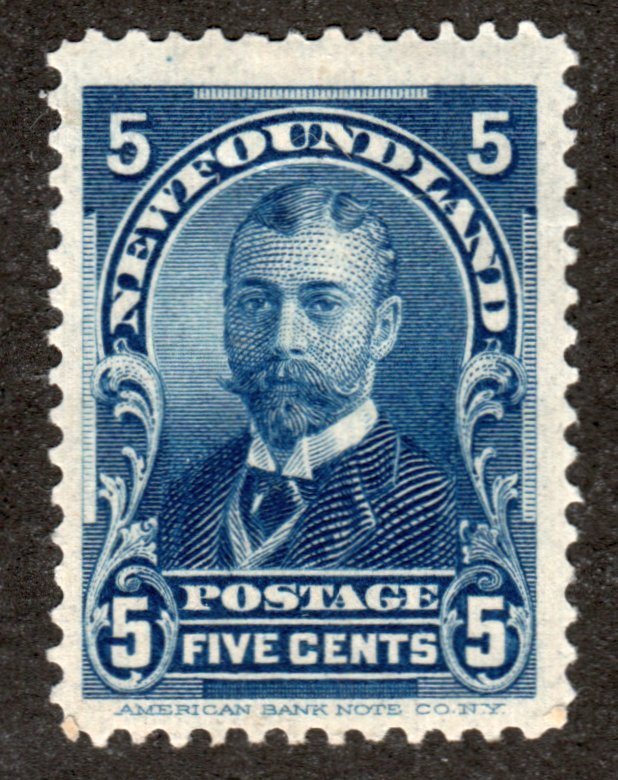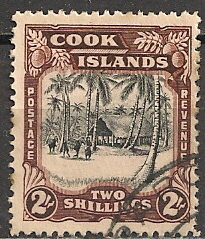
Discussion - Member to Member Sales - Research Center

Discussion - Member to Member Sales - Research Center

Thanks.

Login to Like
this post
Chilly is right. You're very cold on that one. Try Austria.

Login to Like
this post

09:30:22pm
The key, Adam is the value "Kreuzer" (sp?) used in Austria around the turn of the century (1900)

Login to Like
this post

09:43:17pm
It could be Scott #52 Austria
Kais. Koeni. what ever it says means Emperor King, (my German is a little rusty) The post mark covers the rest. The lengthy titles they have for royals. It's too much of a mouthful. What's wrong with just plain King Bob or something?
On a side note My grandma loved watching the German movie Sissi about the Empress Elizabeth of Austria. The whole thing was in German and mom and Grandma would translate what I didn't know.

Login to Like
this post
"The lengthy titles they have for royals. It's too much of a mouthful. What's wrong with just plain King Bob or something?"
The point is that he was Emperor of Austria AND King of Hungary.
After the Hungarian revolution against the Hapsburgs was put down the Hungarians were given the Henry Ford option that they could choose anyone they liked as King - provided it was the Emperor or Austria.

Login to Like
this post
Actually the Hungarians did quite well in the Compromise of 1867 and the dual monarchy was the path to Hungary's independence, though it was painful.
The Austrian defeat at Königgrätz which ended the Austro-Prussian war ensured that northern Germany would be the focus of (German) power under Bismark going forward rather than southern under the House of Habsburg. Bismark was influential in pressuring Austria to accept Hungary's demands and Elisabeth was instrumental in helping achieve those ends with influence from Andrassy. Bismark was quoted as saying "What does Hungary demand?" at the first meeting with Hungarian statesman Ferenc Deak. Though possibly Elisabeth was manipulated by the prime minister, she apparently had a genuine affection for Hungary and the feeling was mutual. Not to be confused with St Elisabeth, but charitable nonetheless.
The Austrians actually conceded to nearly all the Magyar's demands made prior to Koniggratz. The independence of their government, economics. etc. eventually led to their breakup due to Nationalist elements gaining power and the fact that only 41% of Hungary was Magyar at the time. At least half the Kingdom was comprised of non-Magyar populations in Transylvania, Slovenia, Croatia, Slovakia, the Banat and Bacska, Carpatho-Ukraine and Hungary itself. This inevitably led to its severe reduction in territory after WWI and greatly diminished influence in Europe.

Login to Like
this post
This was in a packet of Chile stamps. I can't find it in Scott and need help.
Thanks.

Login to Like
this post

re: Chile Stamp I Think
Chilly is right. You're very cold on that one. Try Austria.

Login to Like
this post
Silence in the face of adversity is the father of complicity and collusion, the first cousins of conspiracy..
24 May 2015
09:30:22pm
re: Chile Stamp I Think
The key, Adam is the value "Kreuzer" (sp?) used in Austria around the turn of the century (1900)

Login to Like
this post
Wanting to bring the joy of stamp collecting to younger generations
24 May 2015
09:43:17pm
re: Chile Stamp I Think
It could be Scott #52 Austria
Kais. Koeni. what ever it says means Emperor King, (my German is a little rusty) The post mark covers the rest. The lengthy titles they have for royals. It's too much of a mouthful. What's wrong with just plain King Bob or something?
On a side note My grandma loved watching the German movie Sissi about the Empress Elizabeth of Austria. The whole thing was in German and mom and Grandma would translate what I didn't know.

Login to Like
this post
03:41:53pm
re: Chile Stamp I Think
"The lengthy titles they have for royals. It's too much of a mouthful. What's wrong with just plain King Bob or something?"
The point is that he was Emperor of Austria AND King of Hungary.
After the Hungarian revolution against the Hapsburgs was put down the Hungarians were given the Henry Ford option that they could choose anyone they liked as King - provided it was the Emperor or Austria.

Login to Like
this post

re: Chile Stamp I Think
Actually the Hungarians did quite well in the Compromise of 1867 and the dual monarchy was the path to Hungary's independence, though it was painful.
The Austrian defeat at Königgrätz which ended the Austro-Prussian war ensured that northern Germany would be the focus of (German) power under Bismark going forward rather than southern under the House of Habsburg. Bismark was influential in pressuring Austria to accept Hungary's demands and Elisabeth was instrumental in helping achieve those ends with influence from Andrassy. Bismark was quoted as saying "What does Hungary demand?" at the first meeting with Hungarian statesman Ferenc Deak. Though possibly Elisabeth was manipulated by the prime minister, she apparently had a genuine affection for Hungary and the feeling was mutual. Not to be confused with St Elisabeth, but charitable nonetheless.
The Austrians actually conceded to nearly all the Magyar's demands made prior to Koniggratz. The independence of their government, economics. etc. eventually led to their breakup due to Nationalist elements gaining power and the fact that only 41% of Hungary was Magyar at the time. At least half the Kingdom was comprised of non-Magyar populations in Transylvania, Slovenia, Croatia, Slovakia, the Banat and Bacska, Carpatho-Ukraine and Hungary itself. This inevitably led to its severe reduction in territory after WWI and greatly diminished influence in Europe.

Login to Like
this post

